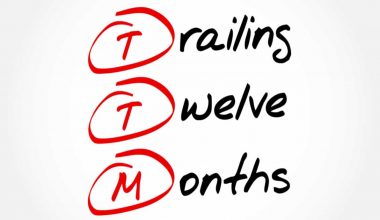Want to know more about student loan deductions? Then this article will help you understand the meaning of the student loan deduction, its loan tax deduction income limit, its calculations or calculator, the student loan interest tax deduction, and why my student loan interest is not tax deductible.
What Is a Student Loan Tax Deduction?
A student loan tax deduction can also be known as a student loan interest deduction, meaning the loan borrowed to pay for higher education can be deducted up to $2,500 of interest. This needs the person’s income level and documentation or status. It is only for individuals that pay less than $2,500 and the loan for education is directly on form 1040.
How Do I Qualify for a Student Loan Tax Deduction?
For the loan to be qualified for higher education, its expenses must be for you or your spouse. The loan must be paid within a reasonable period of time before or after you take out the loan.
The student loan interest deduction is a federal income tax deduction. The student loan tax must be paid by the spouse (taxpayer) and can not be of help to any legal borrower. The loan must be taken during an academic period at least half-time of the program for a higher institution certificate (a degree certificate, e.t.c.). The institution must be an eligible institution and must be under the education department in the U.S.
If the taxpayer should pay $600 or more for the interest on the qualified student’s loan during the year, they should fill out a Form 1098-E for that institution to pay the tax loan for the student. You can also qualify to get a loan if your “MAGI” is less than or is between $70,000 and $85,000. You can deduct less than the maximum $2,500 amount from the higher education institution. If you collect the maximum tax, that means you have a little money of about $500 to save back in your pocket. You can also get a student loan servicer to get you going.
Student Loan Tax Deduction Income Limit
In the student loan tax deduction, the income has no limit if it is done annually within the income limits, repays the loan, and meets the deduction requirements. For the borrower taking the student loan tax deduction that has a 1098-E form, the IRS ( internal revenue service) will check the borrower’s MAGI (gross income) to see if the borrower is qualified to get the loan.
If the borrower’s MAGI is more than $70,000 to $85,000 for singles and $140,000 to $170,000 for married couples, they can’t claim student loan tax deductions. It is because the income limit of student loan tax deductions is much.
Student Loan Tax Deduction Calculator
The calculator helps by providing individuals or borrowers the basic information needed to get a student loan tax deduction through their savings, to check if they are going to pay off the loan (the tax return) for the year. Then, after the check of your MAGI to see if you qualify, if you qualify, then plan the way you want the student loan tax deduction in the filing, whether single or married joint or married separate, with the basic details for each plan you want to make.
The student loan tax deduction calculator can be on record depending on the company or refinance rates, the plan you choose, and the loan term period. Examples:
- Splash Financial APR: 1.74%-9.51%. Then its loan term is 5-25 years.
- Earnest APR: 2.98%-5.79%. While its loan term is 5-20 years.
The Types of Loans
They have different types of loans, namely;
#1. Stafford Loans
These loans are for undergrads only. They have a low origination fee of about 1% of the loan. The interest rate does not depend on the borrower’s credit score or income, and the amount paid is in the lowest range of 4.29%. The Stafford has two sections, namely;
Subsidized Stafford
It is only possible for students with financial needs so long as the student is in school (secondary level) or six months after graduation from school. The borrower doesn’t pay interest because the government takes care of it, and the qualified undergrad students can only take $23,000 from the loan.
Unsubsidized Stafford
The loan allows students to pay the interest and is for graduate and professional students. If the students start from the undergraduate level, the loan will add all the debt interest when the borrower is paying back. This can be very high.
#2. Plus Loans
The government gives this loan to graduate and professional students. It has no borrowing limit and its interest rate is higher than the Stafford rates of about 6.84%, and they check your credit score. The present plus rate is about 4.3%.
#3. Perkins Loans
They are federal government loans with a low-interest rate of about 5% and offer loans directly through colleges, schools that partake in the program, or universities. The loans are limited or lower depending on the school. Its limit is about $60,000.
#4. Private Loan
This loan is not a federal loan but one from private firms or individuals, and it is an option if the federal loan is no longer available or has finished. They are less favorable than the federal loan and harder to get. Its interest rate is sometimes higher than 10%, and they check your credit score.
How Do I Get a Federal Loan?
Getting a federal loan is easy. First, get a free application for federal student aid (FAFSA). After filing the form, send it to your school’s financial aid office and they will do the remaining things necessary.
Is It Worth Claiming Student Loan Interest on Taxes?
In the student loan interest, the deduction directly reduces your adjusted gross income. it checks the amount of input of the deductible interest you put in, and it reduces your adjusted gross income.
Is It Good to Pay off Student Loans Early?
Before taking any action like making extra payments toward your loans, you can have an emergency fund (that is, a fund for sudden emergencies). for example, sickness, etc.). Yes, it is good to pay off your student loan early.
But sometimes it has its disadvantages. Student loans have much lower interest rates as compared to any other private loans. If you make early payments on your low-interest loans and then borrow money for some other purpose, you will pay a much higher rate of interest. At this stage, making an early payment on your student loans will result in you losing money.
What is Student Loan Interest Tax Deduction?
The loan interest tax deduction allows borrowers to deduct up to $2,500 of the interest on a loan for higher education with income limitations. It helps borrowers save a little income from the loan. It benefits the loan, not just for federal loans but also for private loans.
How Can I Make a Good Credit Score?
Credit scores are an important piece of your financial history. Credit scores help lenders decide whether to grant you credit. The average credit score in the United States is 698. But the credit scores can range from 300 to 850 or 250 to 900, depending on the scoring model. But the higher the scores can indicate that you may be less risky to lenders. To get a good credit score you need to;
- First, pay your bills on time, every time. It is the best way to show lenders you’re a good borrower that always pays the bills on time.
- Keep your credit card balances low on every debt you pay
- Improve your credit history.
- Be mindful of your credit history, so as not to be high.
- Take records of your credit reports.
Why Is My Student Loan Interest Not Tax Deductible?
Some borrowers may have a lot of money and still want to get a loan but can’t get it. Here are some reasons why the student loan interest tax loan can’t be deductible;
- If the borrower makes a lot of money, the borrower cannot qualify to claim the deduction. It is because the loan interest offsets the higher income.
- If the borrower is married and filing separately cannot qualify for the deduction.
- When you are dependent on someone else’s tax return you can’t be qualified to claim the deduction.
- The student loan interest deduction allows borrowers to deduct up to $2,500 of the interest paid on a loan for higher education directly on Form 1040. It means that the student loan deductible is first made during the filing of the form. If not, your student interest tax loan can’t be deductible or claimed.
Do You Get Your Money Back for Paying Student Loans?
This happens when you make federal student loan payments from April 21, 2022, to October 31, 2024, as the “CARES Act” states (that you can get a refund if you want it). This refund is possible for those who need the funds now or want to take advantage of a forgiveness option.
To confirm when you have finished paying off your student loan. First, you will receive a letter from your lender congratulating you and letting you know that the loans were paid off. Document the letter for future reference.
Conclusion
In the student loan tax deduction, if a student is no longer a dependent, parents or guardians can still repay the loan for the student.
The loan tax deduction calculator can also check the type of institution you want with the cost of the loan and the interest rate.
The person that helps with the loan interest tax deduction is the student loan servicer. You can seek aid from the servicer if you want. Lastly, being able to claim the deduction without itemizing could be a big benefit for the borrower. The deduction is only for those who pay less than half the amount.
Student Loan Tax Deduction FAQs
How does the student loan deduction work?
When you pay less than $2,500 in student loan interest, the amount of your deduction is calculated on the total amount you make. For example, when you pay $1,000 in interest for a given tax year, your deduction is $1,000, meaning that your taxable income will be reduced by $1,000.
Are student loans tax deductible in 2023?
The student loan interest is worth up to $2,500 for a single filer, head of household, or a qualifying widow(er) with MAGI of less than $70,000 and $140,000 for jointly married couples.
What is the average student loan debt?
The average college debt for student loan borrowers in the United States is $32,731, which is a lot. If one fails to pay the debt, it can result in the use of the Treasury Offset Program, such as the IRS withholding your refund to repay those debts.






